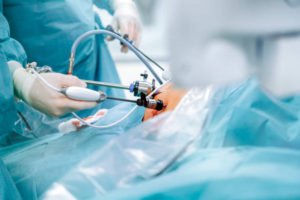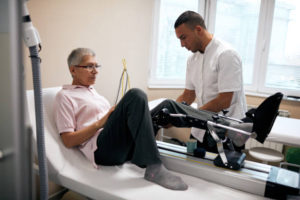Some of us need to undergo knee surgery, but do you know what to expect after arthroscopic knee surgery? Read on below to know more.
What To Expect After Arthroscopic Knee Surgery?

After arthroscopic knee surgery, you will likely experience some discomfort and swelling. This is normal and will usually resolve itself within a few days. You may also have some bruising around the incision site.
Most people can return to their normal activities within a week or two. However, it is important to follow your doctor’s instructions regarding activity level and weight-bearing during your recovery.
You should expect to see your doctor for a follow-up visit within a few weeks of your surgery. At this visit, your doctor will evaluate your healing and discuss any remaining concerns or questions you may have.
If you experience any severe pain, redness, or drainage from your incision site, or if you develop a fever, be sure to contact your doctor right away. These could be signs of an infection.
In general, Surgery on the knee using arthroscopic instruments is very safe. and effective procedure. Complications are rare but can occur. These may include infection, blood clots, damage to nerves or blood vessels, or persistent pain. Be sure to discuss any concerns you have with your doctor before your surgery.
It’s normal to experience some unpleasantness and swelling following arthroscopic knee surgery. If you’re experiencing this, don’t worry; it’ll pass in a few days on its own. You may also notice some bruising at the site of the surgical incision. You should follow your doctor’s recommendation regarding the level of physical activity and weight-bearing throughout your recovery because most people can return to their normal activities after a week or two.
A few weeks after surgery, you’ll have a follow-up appointment with your surgeon. If you have any questions or concerns, your doctor will be able to address them during this visit. As soon as you notice any signs of infection at your incision sites, such as redness or drainage, contact your doctor immediately. These may be symptoms of a disease.
Knee arthroscopic surgery, on the whole, is a painless and successful procedure. The risk of complications is low, but they can happen. If you’re experiencing any of the following symptoms, you should see a doctor right away. If you have any questions or concerns, don’t hesitate to bring them up with your doctor.
You Might Like: Why Is It Called Plastic Surgery?
Tips To Recover Faster

Arthroscopic knee surgery’s a minimally invasive outpatient procedure, which means you can go home the same day. Follow these tips for a smooth and speedy recovery:
- Rest and elevate your leg as much as possible for the first few days.
- Apply ice to your knee for 20 minutes, several times a day.
- Take your pain medication as prescribed by your doctor.
- Wear loose, comfortable clothing and shoes that won’t put pressure on your incision sites.
- Avoid standing or sitting for long periods.
- Do not drive until your doctor says it is okay.
- Do not put any weight on your operated leg until your doctor gives you the green light.
- Physical therapy may be recommended to help you regain range of motion and strength.
Good Reads: What Does HEENT Mean In Medical Terms?
How Is Arthroscopic Knee Surgery Performed?

Arthroscopic knee surgery is a minimally invasive procedure that uses a tiny camera, called an arthroscope, to visualize the inside of your knee joint. The camera is inserted through small incisions in your skin.
Your surgeon will make additional incisions to insert surgical instruments into your knee. These may be used to repair damage to the cartilage, remove debris or detached bodies, or relieve pressure on the kneecap.
In some cases, orthopedic surgery via arthroscopy may be performed as part of a more complex procedure. For example, you may need open surgery to repair a torn ligament.
Interesting Article: When To Go To ER For Fever?
What Are The Benefits Of Arthroscopic Knee Surgery?
Arthroscopic knee surgery offers several benefits over traditional, open knee surgery. These include:
- Smaller incisions and less tissue damage
- Reduced risk of infection
- Shorter hospital stay
- Quicker recovery and return to normal activities
What Are The Risks Of Arthroscopic Knee Surgery?
This knee surgery’s a safe and effective procedure. However, as with any surgery, there are certain risks involved. These may include:
- Infection
- Blood clots
- Damage to nerves or blood vessels
- Persistent pain
These risks will be discussed with you before your surgery. Be sure to ask your doctor any questions you have about the procedure.
Orthopedic surgery via arthroscopy is a minimally invasive procedure that can be used to treat a variety of knee problems. It offers many benefits over traditional, open surgery, including smaller incisions, less tissue damage, and a quicker recovery. The risks of Orthopedic surgery via arthroscopy are low, but they do include infection, blood clots, and persistent pain. Be sure to ask your doctor any questions you have about the procedure before it is performed.
How Long To Recover After Surgery?

Most people who have Orthopedic surgery via arthroscopy can go home the same day. You should rest and elevate your leg as much as possible for the first few days. Apply ice to your knee for 20 minutes at a time, several times a day. Take your pain medication as prescribed by your doctor.
You may need to wear loose, comfortable clothing and incision-friendly shoes that won’t irritate them. Avoid standing or sitting for long periods. Do not drive until your doctor says it is okay. Do not put any weight on your operated leg until your doctor gives you the green light.
Physical therapy may be recommended to help you regain range of motion and strength. Most people make a full recovery within 6 weeks.
However, it may take longer if you have a more complex procedure.
Minimally invasive arthroscopic knee surgery can be used to treat a wide range of knee conditions. It has many advantages over traditional open surgery, such as tiny incisions, less muscle damage, and a faster recovery time. Infection, blood clots, and chronic pain are all possible side effects of arthroscopic knee surgery. Before the procedure, be sure to ask any questions you may have to your doctor.
Good Reads: What Is WNL In Medical Terms?
Final Thoughts
To cure a wide range of knee problems, an arthroscopic procedure known as knee surgery can be used. It has many advantages over traditional open surgery, including smaller incisions, less tissue damage, and a faster recovery time. Infection, blood clots, and chronic pain are all possible side effects of Orthopedic surgery via arthroscopy. Before the procedure, be sure to ask any questions you may have to your doctor.
